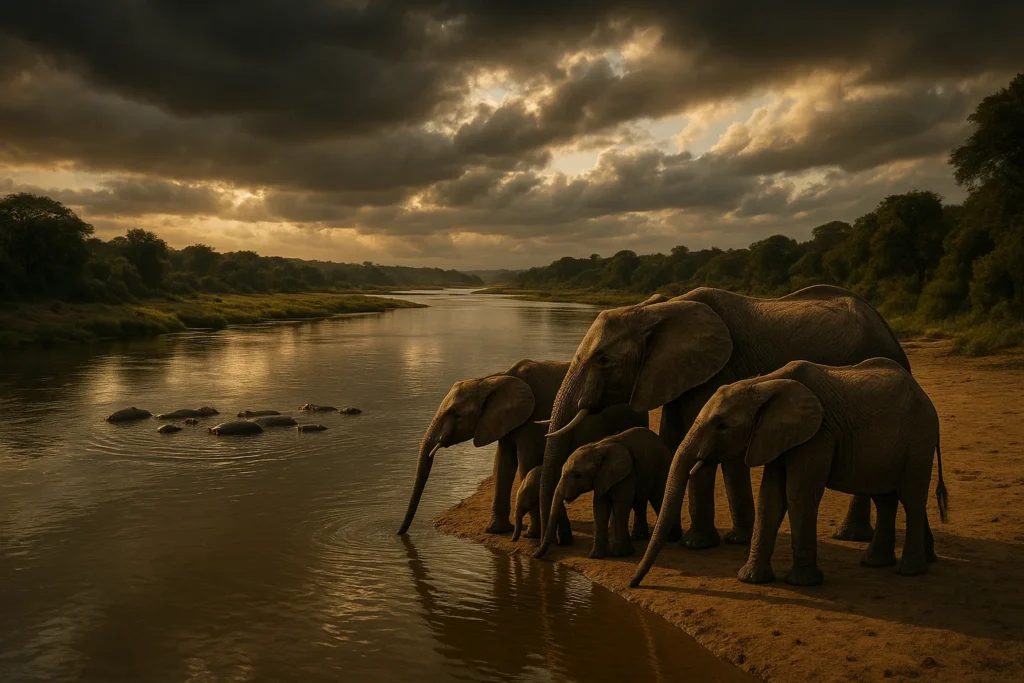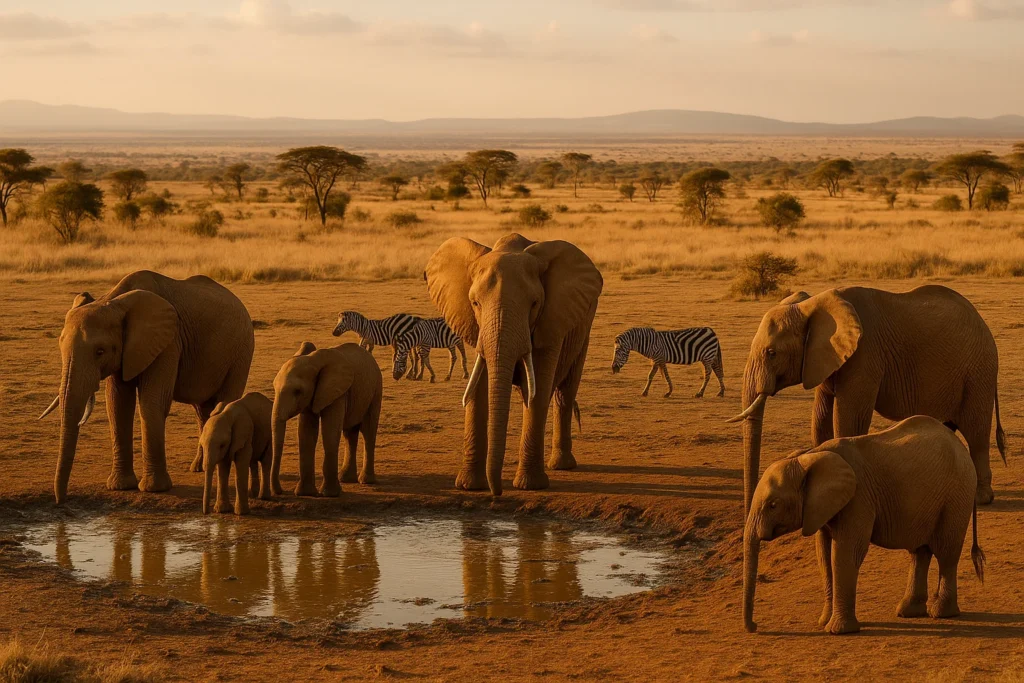Kruger National Park offers an extraordinary canvas for wildlife and nature photography. Beyond standard animal portraits, you can aim for more evocative, signature images—shots that tell stories, show moods, and capture the spirit of the bush. Here are seven creative photographic ideas to try on your next Kruger safari.
1. Silhouettes at Golden Hour
What: Capture the shapes of elephants, giraffes, acacias, or a pride moving against a glowing sky.
Why it works: Early morning and late evening (the “golden hours”) give you soft, warm light and long shadows. The sky is often colorful and animals may linger at water or open ridgelines.
How to do it:
- Position the subject between your camera and the horizon.
- Meter for the sky, underexpose slightly to deepen the silhouette.
- Include a recognizable shape (e.g. tusks, horns, distinct profiles).
Where in Kruger:
- Look-out ridges in the north or high vantage points near riverbanks.
2. Reflections in Waterholes & Pans
What: The mirrored images of wildlife drinking or standing beside still water.
Why it works: During dry season, waterholes contract to pools, creating cleaner reflections. The symmetry gives a poetic feel.
How to do it:
- Use low angles—get close to the waterline.
- Choose calm moments with minimal ripples.
- Use a telephoto lens to compress the scene.
Where:
- Active waterholes near Satara or Lower Sabie.
3. Hidden Frame / Natural Frames
What: Use branches, tree trunks, shadows, or lodge windows to “frame” your subject.
Why it works: Framing adds depth and draws the eye to the subject.
How to do it:
- Scout scenes where flora or architecture can form a rim around your subject.
- Use depth of field to blur the foreground slightly.
Where:
- Riverine zones or shaded forest edges near Timbavati and Letaba.
4. Action in Midday Contrast
What: Capture movement—leaping antelope, dust sprays, predator chases—under strong light.
Why it works: Midday light is harsh but can add contrast and drama to fast-moving subjects.
How to do it:
- Use fast shutter speeds (1/1000s+).
- Meter for highlights.
Where:
- Open plains, dry riverbeds, or termite mounds.
5. Intimate Portraits: Eyes & Textures
What: Close-ups of eyes, fur textures, facial expressions.
Why it works: Creates emotional connection and reveals character.
How to do it:
- Use a long lens (300mm+).
- Shoot wide open (f/2.8–f/4) to blur background.
- Focus on the eye.
Where:
- Calm sightings, resting predators, or habituated herbivores.
6. Storytelling Scenes: Animal + Habitat
What: Compose wider shots showing the animal within its environment.
Why it works: Adds narrative, scale, and context.
How to do it:
- Use moderate focal lengths (50–200mm).
- Compose with negative space and leading lines.
Where:
- Scenic loops like H10, S100-S41, or river view roads.
7. Low Light & Night Photography
What: Capture silhouettes, spotlight-lit scenes, or moonlit landscapes.
Why it works: Low light adds mystery and visual drama.
How to do it:
- Use high ISO and wide apertures.
- Stabilize with a beanbag or tripod.
Where:
- Dusk at waterholes or dawn on open plains.
Bonus: Shoot the Small Stuff
Insects, amphibians, birds, and textures are often overlooked. But macro-style or creative tight shots add depth to your safari album.
Tips to Enhance Your Photo Safari
- Carry spare batteries and memory cards.
- Use a beanbag for camera stability in vehicles.
- Shoot in RAW for better editing flexibility.
- Respect wildlife distance and guide instructions.
Conclusion
A photographic safari in Kruger is a blend of patience, light, and storytelling. Go beyond classic portraits—explore silhouettes, reflections, habitat context, and quiet moments. Each click captures not just a sighting, but a feeling, a story, and a connection to wild Africa.
FAQs
No, drones are strictly prohibited inside the park.
Dry season (June–October) for clear skies and animal concentration, but wet season (Nov–April) offers lush backdrops and birds.
Yes, many lodges offer vehicles fitted for photography and guides who understand light and angles.
A DSLR or mirrorless with lenses ranging from 70–200mm to 100–400mm is optimal. A wide-angle for landscapes is also great.
Yes, but be quick and careful to avoid dust. Keep gear in padded, dustproof bags.






